Artist’s toolbox: Donald Judd’s writings reveal a whole new layer of meaning to his work

During his lifetime, Donald Judd (1928–1994) compiled four major collections of his writings. These volumes, which include his gallery reviews, book reviews, essays, articles, statements and reports have until now been considered the artist’s written work in its entirety. But a new collection, Donald Judd Writings, containing previously unpublished essays and hundreds of insightful daily notes, is now available in a beautiful cloth-bound, brick-like form. Co-published by the Judd Foundation and David Zwirner Books, it has been in design development for over two years.
Judd’s son Flavin, who oversees the artist’s legacy with his sister, Rainer Judd, worked collaboratively with Judd Foundation archivist Caitlin Murray and designer Michael Dyer, of Remake in New York, to produce the dense edition, which he refers to as ‘a toolbox’. In over 1,000 pages of Judd’s writings he hopes readers will ‘find something useful, something that can be a tool for future use. We hope that Don’s thoughts, ideas and complaints can be used by others to create.’
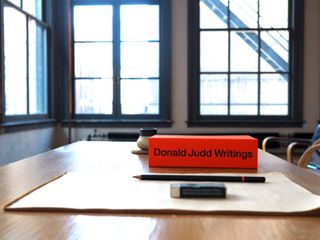
Flavin Judd captured the book in his father’s former studio and home at 101 Spring Street. © Judd Foundation
It is ordered chronologically and where appropriate notes Judd’s location at the time he was writing. ‘It was very important that it contained absolutely everything worth printing in one volume,’ says Judd, who was 25 when his father died in 1994. It is effectively a ‘verbal sketchbook’ of the artist’s life. ‘There is repetition and changes throughout,’ he adds. ‘You are able to see the transition of thought from the beginning to the end and because of its completeness it adds a whole new layer of meaning [to Don’s work].’
Since his father’s death, Judd has been back through every piece of the artist’s writing and transcribed handwritten notes (personal musings, opinions of art and literature, political views, criticisms of people and society) that he found in his journals.
‘There were some notes that seemed directly related to conversations I remember having with Don,’ he says. ‘The conversations were either pretty abstract or about history or art and they tended not to end. Rainer and I were probably the only ones who could talk completely frankly to Don and get away with it. Everyone else, employees, seemed afraid. We could ask tough questions and if you can ask tough questions it leads to long discussions.’
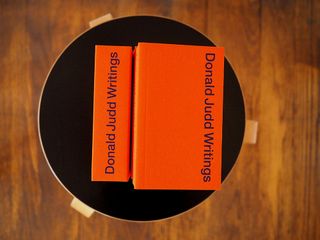
Donald Judd’s extensive writings have been compiled in a cloth-bound, brick-like tome. Photography: Flavin Judd
The process of putting the book together was arduous, with Judd sometimes spending up to eight hours deciphering one word of his father’s scrawled handwriting. ‘I have a whole page in my own sketchbook where I rewrote his words to figure out what certain things were,’ he says. But it was also a beautiful experience for Judd: ‘It’s about as close as you can get to someone again when you are with what they wrote.’
Michael Dyer first began working with Flavin and Rainer Judd on a new identity of the Judd Foundation, which was revealed prior to 101 Spring Street – the artist’s five-storey, cast-iron home and studio in New York – being opened to the public in 2013. ‘Flavin and Rainer’s combined vision is a very appropriate stewardship of Donald Judd’s legacy,’ says Dyer. ‘I feel very much the co-designer on everything we do together – the working process is highly collaborative.’
Dyer says he felt a certain weight of pressure designing the Writings book given its sheer volume, but has come to trust the unique working process he has established with Flavin and Rainer. ‘They like to try a lot of different things and you have to be comfortable with that,’ he says.
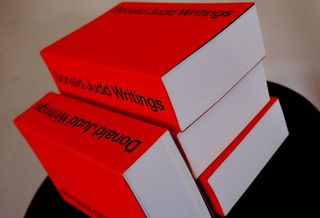
The hefty book is over 1,000 pages long. Photography: Flavin Judd
The size of the book was Judd’s idea. He admired Phaidon’s redesigned pocket edition of EH Gombrich’s The Story of Art, published in 2006. ‘I liked the way it was unpretentious, it was compact, it did what it was supposed to do and you could still carry it around,’ he says.
So Dyer was tasked with figuring out the proportions for the book so that the finished product could be a similarly small size and from there they established the brick-like form. ‘Everything else – the interior grid and the margins – was derived from the book’s proportion,’ says Dyer. ‘It looks like a simple job on the surface but required a friend in Switzerland coming up with a custom piece of code to enable me to adjust the spacing in the font [Bembo]. We had to do quite a lot of surgery for its many anomalies.’
When Dyer and Judd first discussed the project they talked about setting the book in Helvetica, which is used on most of the Judd Foundation’s materials. ‘Flavin immediately felt that setting a 1,000 page book that is virtually all text in Helvetica is a cruel and unusual form of punishment for the reader,’ says Dyer. ‘It also felt very aestheticised, not at all considered from a reader’s perspective.'

The book’s special binding allows it to be opened and laid flat without the spine creasing
‘We wanted it to be a pleasure to read,’ he adds. ‘We didn’t want the book to be self-conscious and a knowing design object.’
The simple and elegant product pushes design innovations to make it satisfying to the reader. A special binding technique was developed (for Dyer it is ‘one of the most important things about the book’) allowing the book to be opened and laid completely flat without the spine breaking or creasing. Once shut it returns to its perfect form. ‘That is my one big pride point,’ says Dyer. ‘It took a lot of prototyping to figure that out.’
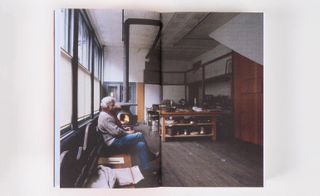
A spread in the book shows Donald Judd on the second floor of 101 Spring Street, his former New York home and studio, in 1985. Courtesy of Judd Foundation, New York. © Antonio Monaci. Photography: Doris Lehni Quarella
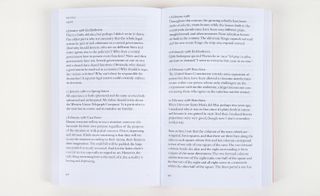
The book is ordered chronologically and where appropriate notes Judd’s location at the time he was writing
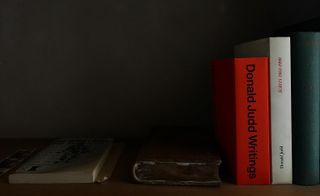
‘We didn’t want the book to be self-conscious and a knowing design object,’ explains Michael Dyer, who worked with Judd’s children, Flavin and Rainer, on the book (and previously on a new identity of the Judd Foundation). © Judd Foundation. Photography: Flavin Judd
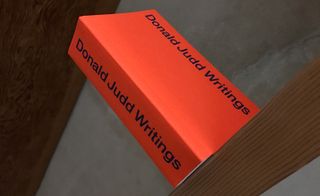
The size of the book was an homage to Phaidon’s edition of EH Gombrich’s The Story of Art. © Judd Foundation. Photography: Flavin Judd
INFORMATION
Donald Judd Writings, published by Judd Foundation and David Zwirner Books; edited by Flavin Judd and Caitlin Murray. For more information, visit the Art Book website
Wallpaper* Newsletter
Receive our daily digest of inspiration, escapism and design stories from around the world direct to your inbox
-
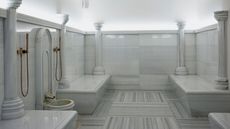 A new book highlights the work of Turkish interior designer Zeynep Fadıllıoğlu
A new book highlights the work of Turkish interior designer Zeynep Fadıllıoğlu‘Zeynep Fadıllıoğlu: Luxury Redefined’, published by Rizzoli, traces the career of leading Istanbul-based designer Zeynep Fadillioglu, the first woman to design a mosque in Turkey
By Léa Teuscher Published
-
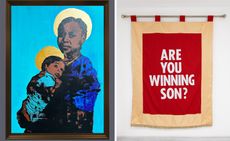 London gallery Incubator’s six emerging artists to see in spring 2024
London gallery Incubator’s six emerging artists to see in spring 2024Incubator's spring programme features six artists in consecutive two-week solo shows at the London, Chiltern Street gallery
By Mary Cleary Published
-
 Blue Copper Loft is a Dubai sanctuary for a modern nomad
Blue Copper Loft is a Dubai sanctuary for a modern nomadBlue Copper Loft designed by Anarchitect in the heart of Dubai is a peaceful, yet luxurious sanctuary for a modern nomad
By Ellie Stathaki Published
-
 ‘Package Holiday 1968-1985’: a very British love affair in pictures
‘Package Holiday 1968-1985’: a very British love affair in pictures‘Package Holiday’ recalls tans, table tennis and Technicolor in Trevor Clark’s wistful snaps of sun-seeking Brits
By Caragh McKay Published
-
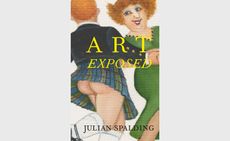 ‘Art Exposed’: Julian Spalding on everything that’s wrong with the art world
‘Art Exposed’: Julian Spalding on everything that’s wrong with the art worldIn ‘Art Exposed’, Julian Spalding draws on his 40 years in the art world – as a museum director, curator, and critic – for his series of essays
By Alfred Tong Published
-
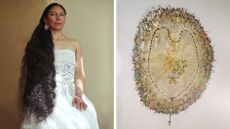 Marisol Mendez's ‘Madre’ unpicks the woven threads of Bolivian womanhood
Marisol Mendez's ‘Madre’ unpicks the woven threads of Bolivian womanhoodFrom ancestry to protest, how Marisol Mendez’s 'Madre' is rewriting the narrative of Bolivian womanhood
By Sofia de la Cruz Published
-
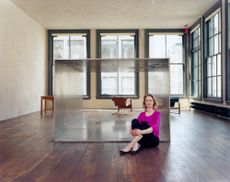 Donald Judd’s home and studio in New York: celebrating 10 years
Donald Judd’s home and studio in New York: celebrating 10 yearsThe late Donald Judd’s home and studio in New York opened to the public in June 2013, after a three-year restoration process; we celebrate the occasion’s 10-year anniversary by revisiting our story from the archive
By Alice Rawsthorn Published
-
 Photo book explores the messy, magical mundanity of new motherhood
Photo book explores the messy, magical mundanity of new motherhood‘Sorry I Gave Birth I Disappeared But Now I’m Back’ by photographer Andi Galdi Vinko explores new motherhood in all its messy, beautiful reality
By Hannah Silver Published
-
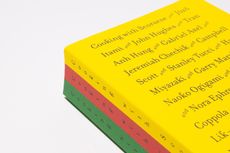 Best contemporary art books: a guide for 2023
Best contemporary art books: a guide for 2023From maverick memoirs to topical tomes, turn over a new leaf with the Wallpaper* arts desk’s pick of new releases and all-time favourite art books
By Harriet Lloyd-Smith Published
-
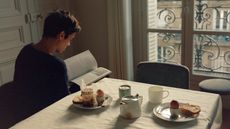 The best photography books for your coffee table
The best photography books for your coffee tableFlick through, mull over and deep-dive into the best photography books on the market, from our shelves to you
By Sophie Gladstone Published
-
 Behind the scenes of Stanley Kubrick’s The Shining: new book charts the making of a horror icon
Behind the scenes of Stanley Kubrick’s The Shining: new book charts the making of a horror iconPublished in February 2023 by Taschen, a new collector's book will go behind the scenes of Stanley Kubrick’s The Shining, charting the unseen making of a film that defined the horror genre
By Harriet Lloyd-Smith Published